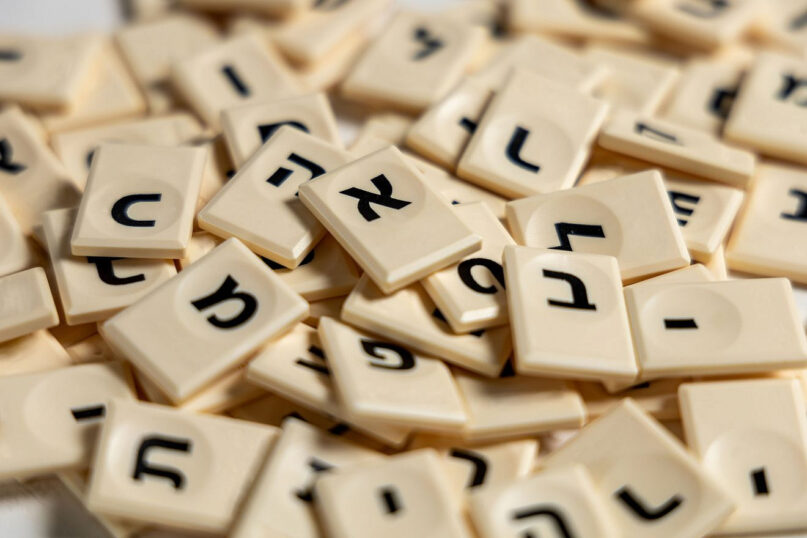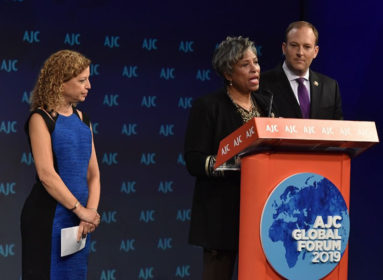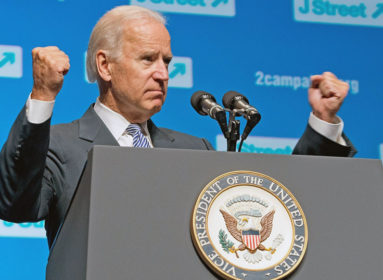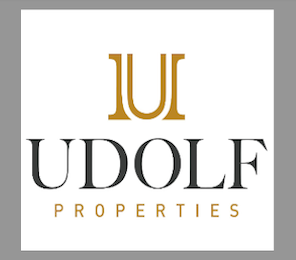
(JNS) Arabic speakers in the United States increased from 215,000 in 1980 to 1.4 million in 2021, while Hebrew speakers more than doubled in that span from 100,000 to 220,000. That’s according to a new analysis from the Pew Research Center.
Arabic is now the nation’s seventh most common, non-English language spoken at home, according to Pew, which analyzed Census Bureau data on those aged 5 and older who speak non-English languages at home.
Jeffrey S. Passel, a senior demographer at Pew, told JNS that the growth of Hebrew speakers in the United States “is largely a function of immigration, mainly from Israel.”
“Around half of Hebrew speakers in both years were foreign-born,” he said “The slower growth of the Hebrew-speaking population than the Arabic-speaking population is principally due to differences in immigration levels.”
Hebrew was the 24th most-spoken non-English language in American homes in 2021, according to Pew’s analysis.
In 1980, the foreign-born share of Hebrew speakers stateside was 53%, dropping to 47% in 2021, according to Pew data. In that same period, English-proficient Hebrew speakers rose from 73% to 86%.
The largest share of Hebrew speakers by age is between 18 and 64, which is 65% of Hebrew speakers. Sixteen percent are over 65 and 19% under 18.
The largest portion of Hebrew speakers in the country (34%, 75,000 people) live in the New York metropolitan area with nearly a quarter (55,000 people) living in the Empire State. The largest share lives in the Northeast (44%), followed by the U.S. West (28%), South (22%) and Midwest (6%).
The number of families that speak Yiddish at home declined by 41% from 320,000 in 1980 to 190,000 in 2021, according to Pew data. In 2021, Yiddish was the 31st most spoken non-English language in U.S. homes, and the share of foreign-born Yiddish speakers in the country declined from 51% in 1980 to 8% in 2021. Nine in 10 Yiddish speakers at home lived in New York State in 2021.
Stanley Dubinsky, a linguistics professor at the University of South Carolina, told JNS this uptick in Hebrew speakers in the United States was likely due to economic factors affecting the Jewish state from 1980 to 2000.
It is noteworthy that the number of U.S. Hebrew speakers climbed from 1980 to 2000, according to Dubinsky. “Then the overall number stays pretty stable with no significant increase,” he said.
The word “shalom” in Hebrew. Credit: Wikimedia Commons.
More Israelis immigrated to the United States prior to 2000, after which the Israeli economy improved significantly.
Israel now has the 23rd-highest per capita GDP, per the World Bank, noted Dubinsky. “Israel’s trajectory has increased quite a lot since that period of economic downturn” in the 1980s, he said.
Israeli-Americans’ strong desire to maintain their Hebrew is part of a larger success story of Israel and Jews maintaining their individual identities against overwhelming odds and thriving, according to Dubinsky.
“There are more speakers of Hebrew today than ever in any time in Jewish history. That is inspirational,” he said. He called Hebrew’s rebirth as a native language more than a century ago “the most successful language revitalization project in history.”
“Without Hebrew, the Jewish people would have simply been lost to history as yet another Moabite or Canaanite tribe,” said Dubinsky. “As long as you maintain the language, you maintain the people.”
PHOTO: Hebrew letters. Credit: ChameleonsEye/Shutterstock.








 Southern New England Jewish Ledger
Southern New England Jewish Ledger









